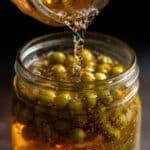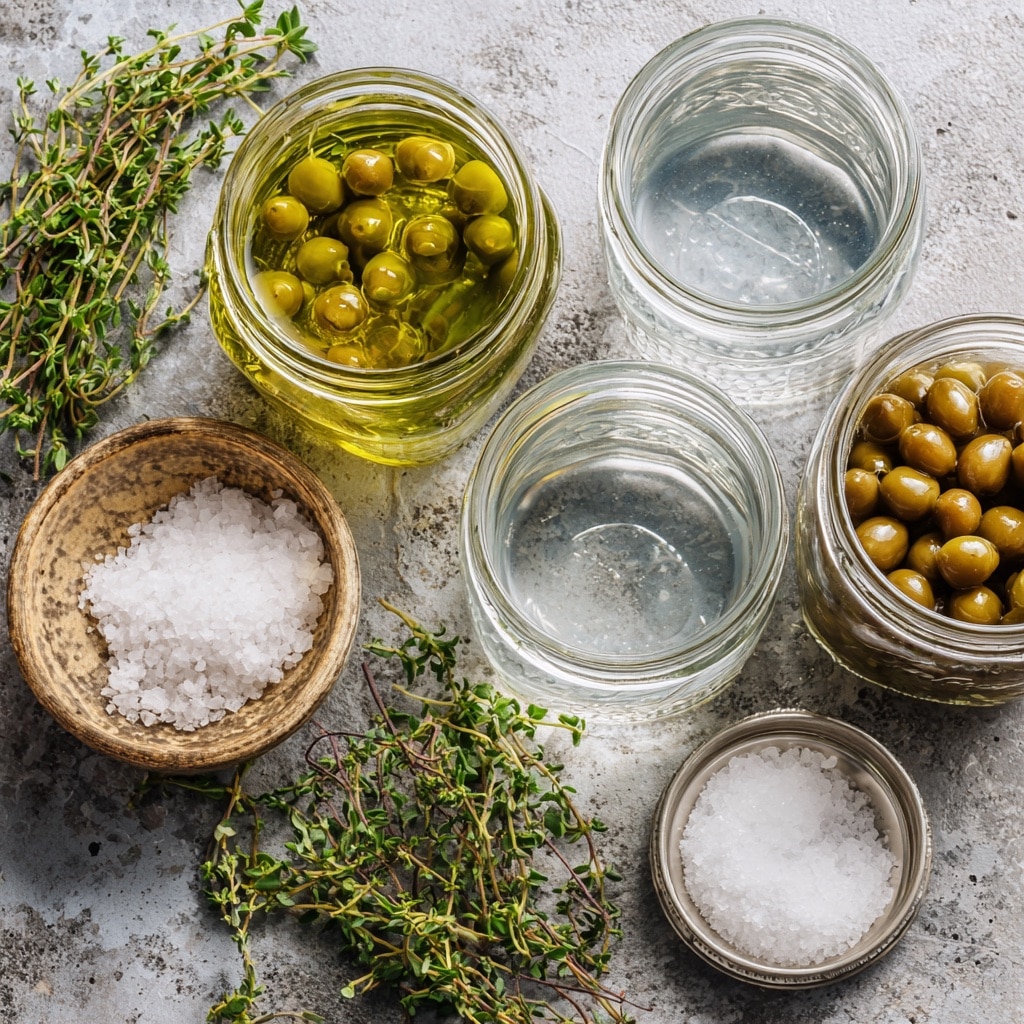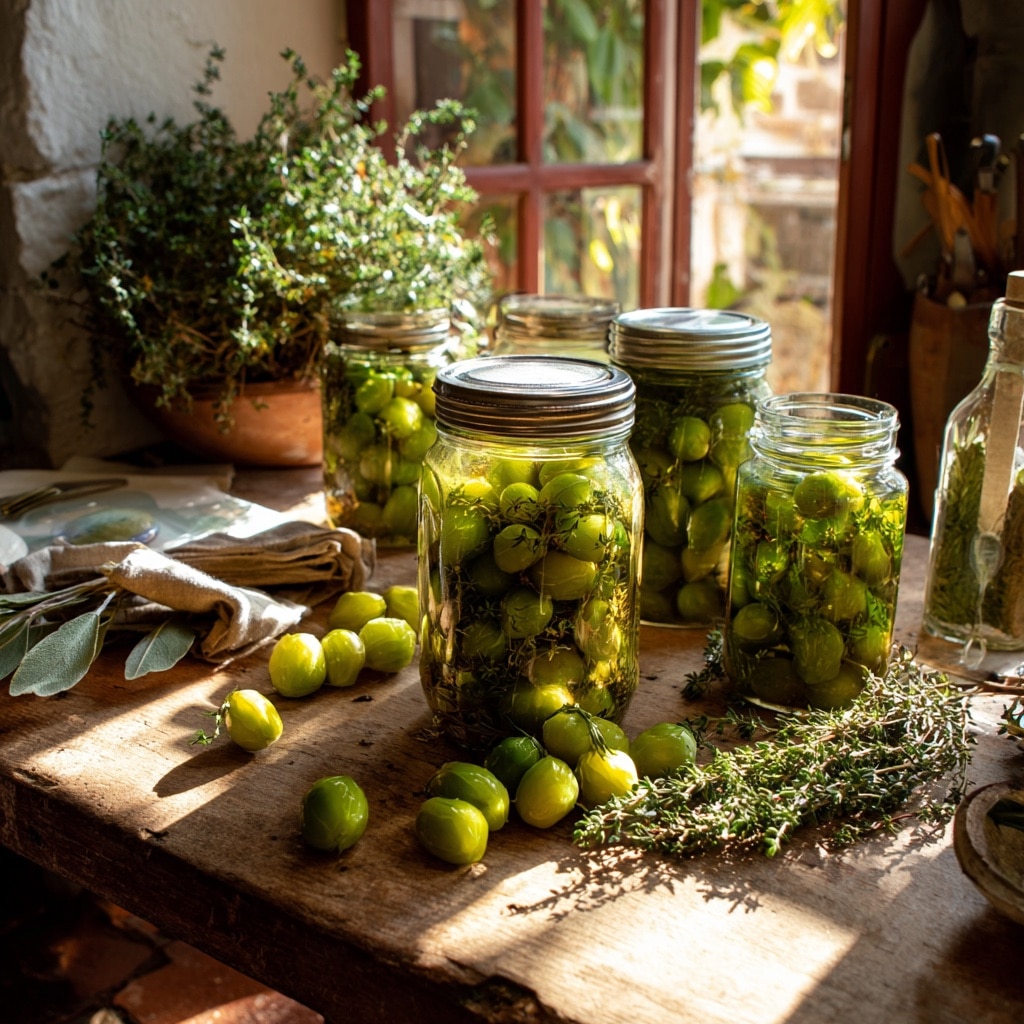Table of Contents
Last summer, my grandmother shared a secret from her Mediterranean cuisine. She showed me how to make homemade caperberries. This simple recipe adds a tangy flavor to any dish.
I never knew the magic of caperberries before. My grandmother’s love for preserving flavors sparked my interest. She taught me that making caperberries is an art passed down through generations.
This caperberries recipe is more than just cooking. It connects us to a rich culinary heritage. It lets us explore new flavors and bring Mediterranean cuisine to our kitchens. Whether you’re experienced or new to cooking, this 30-minute recipe will change how you see caperberries.
Are you ready for a tasty adventure? Let’s explore caperberries and see how easy it is to make something amazing at home.
Print
Easy Homemade Caperberries Recipe in 30 Minutes
- Total Time: 30 minutes
- Yield: About 2 cups
Description
A quick 30-minute recipe to pickle caperberries at home, passed down from Mediterranean tradition.
Ingredients
2 cups fresh caperberries (or small, firm capers)
1.5 cups white vinegar (5% acidity)
1 cup filtered water
3 tablespoons kosher salt
Optional: fresh thyme sprigs, bay leaf, or garlic cloves for extra flavor
Instructions
1. Rinse caperberries thoroughly under cold water to remove any dirt or debris.
2. Sterilize mason jars and lids by boiling or using a dishwasher’s high-heat cycle.
3. In a saucepan, combine white vinegar, filtered water, and kosher salt. Add optional herbs or garlic. Bring to a rolling boil.
4. Pack the clean caperberries into sterilized jars, leaving 1 inch of headspace at the top.
5. Pour the hot brine into each jar, fully submerging the caperberries and leaving ½ inch of headspace.
6. Seal the jars tightly, label with the date, and let cool to room temperature before refrigerating.
7. Refrigerate and allow the caperberries to pickle for at least 7 days before tasting. Store up to 3–4 months.
Notes
Store in the fridge for best results.
Use as a garnish, in salads, sauces, or antipasto plates.
- Prep Time: 10 minutes
- Cook Time: 20 minutes
- Category: Condiment
- Cuisine: Mediterranean
Understanding Caperberries and Their Mediterranean Origins
Explore the world of caperberries, a treasure in Mediterranean cooking. These small wonders have a long history. They add unique flavor and hold cultural value.
What Are Caperberries vs Traditional Capers
Many think caperberries and capers are the same. But they’re not. Here’s why:
- Capers: Tiny, pickled flower buds
- Caperberries: Fully grown fruit of the caper plant
The Caper Plant (Capparis spinosa) Characteristics
The caper plant is amazing. It grows in tough Mediterranean spots. It loves rocky, sunny places and makes tasty treats.
| Characteristic | Description |
|---|---|
| Scientific Name | Capparis spinosa |
| Native Region | Mediterranean Basin |
| Growing Conditions | Rocky, dry environments |
| Plant Type | Perennial shrub |
Traditional Uses in Mediterranean Cuisine
Pickled capers are key in Mediterranean cooking. They add a tangy flavor to many dishes.
- Greek salads
- Italian pasta sauces
- Spanish tapas
- Mediterranean seafood dishes
Learning about caperberries can change how you cook. It’s great for anyone who loves Mediterranean food.
Essential Ingredients and Equipment for Homemade Caperberries
Making your own caperberries recipe is easy and fun. You need a few simple things and some basic kitchen tools. It’s a great way to enjoy cooking, whether you’re new or experienced.
Key Ingredients for Your Caperberries Recipe
- Fresh caperberries or small, firm capers
- White vinegar (5% acidity)
- Kosher salt
- Filtered water
- Optional herbs and spices for flavor
Essential Equipment
- Clean glass mason jars
- Sterilization equipment
- Large saucepan
- Long-handled spoon
- Measuring cups
If you love growing capers, picking the right ingredients is key. Your homemade caperberries will show how good your ingredients are.
| Ingredient | Purpose | Recommended Quantity |
|---|---|---|
| Caperberries | Primary ingredient | 2 cups |
| White Vinegar | Pickling solution | 1.5 cups |
| Kosher Salt | Preservation | 3 tablespoons |
| Water | Dilution | 1 cup |
Start by getting the best ingredients for your caperberries recipe. Use clean, sterilized tools to keep everything safe. Remember, making tasty caperberries takes time and patience.

Step-by-Step Caperberries Recipe
Making pickled capers at home is simple! This recipe turns these Mediterranean treats into a tangy, tasty condiment. It will make your dishes even better.
First, get all your ingredients and tools ready. The secret to great pickled capers is in the prep and details.
Preparing the Brine Solution
A great caper sauce starts with a good brine. You’ll need:
- White vinegar
- Filtered water
- Kosher salt
- Optional herbs like thyme or bay leaf
Pickling Process Details
Here’s how to make your own pickled caperberries:
- Carefully rinse fresh caperberries
- Sterilize glass jars thoroughly
- Combine vinegar, water, and salt in a saucepan
- Bring brine to a rolling boil
- Pack caperberries into clean jars
- Pour hot brine over caperberries
Storage and Preservation Methods
Keep your pickled capers fresh for months. Always store them in the fridge. Let them pickle for at least a week before tasting. Your homemade caperberries will taste much better than store-bought ones.
Pro tip: Label your jars with the date to track their pickling progress!

Vinegar vs Fermentation Methods for Caperberries
When making your caperberries recipe, you’ll find two main ways to preserve them: vinegar pickling and fermentation. Each method gives your pickled capers a special taste and look. This opens up new ways to cook.
Vinegar pickling is fast and easy. It involves soaking caperberries in a tangy vinegar mix. This makes them taste sharp right away. Home cooks like how simple and quick it is.
Fermentation is a traditional way that makes flavors grow over time. It uses a salt brine to let natural bacteria change the caperberries. This creates a richer, more complex taste.
Comparing Preservation Methods
| Method | Flavor Profile | Preparation Time | Complexity |
|---|---|---|---|
| Vinegar Pickling | Sharp, Tangy | Quick (1-2 days) | Easy |
| Fermentation | Complex, Soft | Slow (1-4 weeks) | Moderate |
Key Considerations for Your Caperberries Recipe
- Vinegar pickling is great for quick preservation
- Fermentation makes flavors deeper
- Try both to see what you like best
- Think about how long you’ll store them and what you need
Choosing how to make your pickled capers is all about having fun. Don’t be shy to try new things and find your favorite tastes!
Health Benefits and Nutritional Value
Discover the amazing nutritional power of these tiny Mediterranean gems. Caperberries are not just tasty; they’re full of nutrients that boost your health.
Exploring caperberries nutrition reveals they’re packed with good stuff. A small serving gives you a lot of vitamins and minerals. These can help you meet your daily nutritional needs.
Vitamin and Mineral Content
Caperberries are full of important nutrients. Here’s what they offer:
- Vitamin K: Helps with bone health and blood clotting
- Copper: Important for making red blood cells
- Iron: Crucial for carrying oxygen in the body
- Magnesium: Good for muscles and nerves
Antioxidant Properties
The antioxidants in caperberries make them special in Mediterranean dishes. These antioxidants protect your body from harm and damage.
| Antioxidant | Health Benefits |
|---|---|
| Quercetin | Reduces inflammation |
| Rutin | Good for heart health |
| Kaempferol | May fight cancer |
Digestive Health Benefits
Your gut will love caperberries. They have natural compounds that support digestive health. This helps keep your digestive system balanced and happy.
Even though caperberries are full of nutrients, they have a lot of sodium. Eat them in small amounts to enjoy their health benefits without too much salt.
Creative Ways to Use Caperberries in Cooking
Your homemade caperberries are ready to make your dishes special. They add a unique taste and are very versatile.
Here are some tasty ways to use caperberries in your meals:
- Caper Salad: Mix chopped caperberries with tomatoes, cucumbers, and feta cheese for a Mediterranean salad
- Caper Appetizers: Wrap caperberries in prosciutto for a fancy and quick snack
- Make a zesty caper sauce by blending caperberries with olive oil, lemon juice, and herbs. Use it on pasta or fish
There are many ways to use caperberries. Try these ideas too:
- Add them to pizzas for a surprise flavor
- Put them in tuna or chicken salad for a tangy twist
- Use them as a garnish for sandwiches and charcuterie boards
| Dish Type | Caperberry Usage | Flavor Profile |
|---|---|---|
| Salads | Chopped or whole | Tangy, briny |
| Appetizers | Wrapped or skewered | Sharp, salty |
| Sauces | Blended or minced | Intense, zesty |
Cooking is an adventure. Don’t be shy to try new things with your caperberries. You’ll find exciting flavors!

Tips for Harvesting and Selecting Fresh Caperberries
Growing caperberries is fun for gardeners. They need special care to grow well in your garden.
Harvesting caperberries is an art. Picking them at the right time and way makes a big difference.
Identifying Ripe Caperberries
Ripe caperberries show certain signs:
- Size like small olives
- Firm, smooth texture
- Green with a hint of purple
- Little to no blemishes
Best Harvesting Practices
Harvesting caperberries needs care and skill. Look at Italian cooking sites for tips.
| Harvesting Stage | Recommended Action |
|---|---|
| Early Morning | Best time for picking caperberries |
| Tools | Clean, sharp scissors |
| Cutting Technique | Cut stem just above the fruit |
With care, your caper plant will give you lots of tasty caperberries. Patience and gentle care are important for growing capers.
Common Mistakes to Avoid When Making Caperberries
Making perfect caperberries needs focus and cooking skills. Whether you’re new or experienced, knowing common mistakes helps. This way, you can make tasty pickled capers every time.
- Jar Sterilization Slip-ups: Dirty jars can ruin your capers. Always clean your glass containers well before starting.
- Brine Coverage Errors: Not enough brine can spoil your capers. Make sure your caperberries are fully covered in the pickling liquid.
- Rushing the Pickling Process: Making pickled capers takes time. Rushing can make flavors and texture not so good.
Success with your caperberries recipe comes from careful prep and technique. Avoid these mistakes by following these tips:
| Mistake | Prevention Strategy |
|---|---|
| Improper Cleaning | Sterilize jars with boiling water or dishwasher’s high-heat cycle |
| Inconsistent Brine | Use precise salt-to-water ratio recommended in recipes |
| Premature Tasting | Allow caperberries to pickle for recommended time period |
Making pickled capers is like an art that gets better with practice. Don’t worry about mistakes at first. Each try helps you get better. Be careful, follow good recipes, and trust your cooking sense.
The secret to great caperberries is knowing these common mistakes and learning from them. With patience and careful attention, you’ll soon make delicious homemade pickled capers that are as good as the pros.
Conclusion
Your journey into caperberries recipe has been fun. You’ve learned about Mediterranean cuisine. You now know how to pickle these tiny gems.
Caperberries are very versatile. They can make simple dishes special. You can use them in salads, sauces, or try new flavors.
Cooking is always learning and trying new things. Your caperberries recipe is just the start. Keep learning, trust yourself, and try new flavors.
Every great chef starts with curiosity and love for cooking. Your homemade caperberries show your creativity. Keep exploring and tasting. Enjoy the journey in your kitchen.
